
A Complete Guide to Keeping Your Scaly Friend Healthy
Bearded dragons have become one of the most beloved reptilian pets, captivating owners with their docile nature and expressive personalities. However, like all pets, these fascinating creatures require attentive care and a deep understanding of their health needs. Whether you’re a new bearded dragon owner or have been caring for these magnificent reptiles for years, understanding their health is crucial for ensuring a long, happy life for your scaly companion.
The key to successful bearded dragon ownership lies in prevention, early detection, and knowing when to seek professional help. These resilient creatures often hide signs of illness as a survival instinct, making it essential for owners to be vigilant observers of their pet’s behavior, appearance, and habits. From recognizing the subtle differences between a healthy and unhealthy dragon to understanding common diseases and proper treatment protocols, this comprehensive guide will equip you with the knowledge needed to be the best caregiver possible.
Understanding bearded dragon health isn’t just about treating problems when they arise it’s about creating an environment where your pet can thrive. Poor husbandry practices account for the majority of health issues in captive bearded dragons, making education and proper care setup your first line of defense against illness and disease.

Do Bearded Dragons Carry Diseases?
Yes, bearded dragons can carry various diseases, both those that affect only reptiles and zoonotic diseases that can potentially transmit to humans. However, this shouldn’t discourage you from keeping these wonderful pets—with proper hygiene practices and veterinary care, the risks are manageable.
The most common concern among new owners is Salmonella, a bacteria that naturally exists in the digestive tract of most reptiles, including bearded dragons. According to veterinary studies, up to 90% of reptiles carry Salmonella without showing any symptoms. This doesn’t mean your bearded dragon is sick—it’s simply part of their normal bacterial flora.
Other diseases that bearded dragons may carry include:
- Campylobacter: Another bacterial infection that can cause digestive issues
- Parasites: Including coccidia, pinworms, and various mites
- Viral infections: Such as adenovirus, which primarily affects reptiles
- Fungal infections: Including yellow fungus disease (CANV)
The key to managing these risks lies in proper hygiene practices. Always wash your hands thoroughly with soap and warm water after handling your bearded dragon, cleaning their enclosure, or touching anything in their habitat. Avoid touching your face, eating, or preparing food without washing your hands first.
Regular veterinary checkups can help detect and manage any diseases early. Most reptile veterinarians recommend annual fecal examinations to check for parasites and bacterial overgrowth. Quarantining new bearded dragons for 30-60 days before introducing them to other reptiles is also crucial for preventing disease transmission.
How to Treat a Sick Bearded Dragon
Treating a sick bearded dragon requires a combination of immediate first aid, environmental optimization, and professional veterinary care. The approach depends on the specific illness, but there are general principles that apply to most situations.

Immediate Steps When You Suspect Illness:
First, isolate your bearded dragon if you have multiple reptiles to prevent potential disease spread. Create a hospital setup with paper towels as substrate (easier to monitor waste and maintain cleanliness), appropriate heating and UVB lighting, and easy access to food and water.
Temperature regulation is crucial during illness. Sick bearded dragons often cannot thermoregulate effectively, so maintaining proper basking temperatures (95-110°F) and cool zones (75-85°F) becomes even more critical. Some veterinarians recommend slightly elevated temperatures to boost the immune system, but this should only be done under professional guidance.
Supportive Care Measures:
Hydration is often the most important immediate concern. Offer warm baths (85-90°F water) for 10-15 minutes daily, as many bearded dragons will drink during soaking. For severely dehydrated dragons, your veterinarian may need to provide subcutaneous or intravenous fluids.
Nutrition support may involve hand-feeding or syringe-feeding appropriate foods. Sick dragons often lose their appetite, so offering highly palatable foods like hornworms or phoenixworms can help maintain nutrition. In severe cases, veterinary-prescribed liquid diets may be necessary.
When to Seek Professional Help:
Never attempt to treat serious symptoms without veterinary guidance. Contact a reptile veterinarian immediately if your bearded dragon shows:
- Lethargy lasting more than 24-48 hours
- Refusal to eat for more than a week
- Difficulty breathing or mouth breathing
- Unusual discharge from eyes, nose, or mouth
- Severe behavioral changes
- Paralysis or inability to move normally
Medication Administration:
If your veterinarian prescribes medications, follow dosing instructions precisely. Many medications for reptiles are weight-based, and overdosing can be dangerous. Common treatments include antibiotics for bacterial infections, antiparasitic medications for internal parasites, and topical treatments for skin conditions.
Can Bearded Dragons Get Sick from Humans?
While the risk is generally low, bearded dragons can potentially contract certain illnesses from humans, making it important to practice good hygiene and avoid contact when you’re unwell.
The most significant concern is respiratory infections. Human cold and flu viruses typically don’t affect reptiles, but bacterial secondary infections can sometimes transmit between species. If you have a respiratory illness, avoid close contact with your bearded dragon and always wash your hands before handling.
Bacterial Transmission Risks:
Certain bacteria commonly found on human skin or in human mouths can cause infections in bearded dragons.
Never allow your bearded dragon to lick your mouth or face, and avoid letting them contact open wounds on your skin. If you have cuts or abrasions on your hands, wear gloves when handling your pet or cleaning their enclosure.
Stress Related Illness:
Humans can indirectly make bearded dragons sick through stress. Loud noises, excessive handling, irregular feeding schedules, and poor husbandry practices all create stress that weakens the immune system. Stressed bearded dragons are more susceptible to infections and parasites they might otherwise resist. FULL BLOG READ MORE
Prevention Strategies:
Maintain consistent care routines and avoid handling your bearded dragon when you’re ill. If you must care for your pet while sick, wear a mask and wash your hands thoroughly before and after contact. Consider having another family member take over care duties temporarily if you’re severely ill.
Signs of a Healthy Bearded Dragon
Recognizing the characteristics of a healthy bearded dragon is essential for early detection of health problems. Healthy bearded dragons display consistent patterns of behavior, appearance, and physiological functions that indicate proper wellness.
A healthy bearded dragon should be alert and responsive to their environment. They should track movement with their eyes, respond to your presence, and show interest in food during feeding times. Their body posture should be upright when active, with the head held high and limbs supporting their body weight effectively.
Physical Characteristics of Health:
The skin should appear vibrant and properly shed in complete pieces. Healthy dragons have bright, clear eyes without discharge or swelling. Their mouth should be free of excess saliva, unusual coloration, or visible lesions. The beard area should be its normal color (typically light) when the dragon is relaxed.
Breathing should be quiet and regular, without visible effort or mouth breathing. The belly should appear rounded but not distended, and the tail should be plump at the base, indicating good body condition.
Behavioral Indicators:
Healthy bearded dragons maintain regular activity cycles, basking during appropriate times and retreating to cooler areas when needed. They should show normal appetite patterns, though these may vary seasonally. During their active season, they should eagerly consume appropriate amounts of food.
Normal elimination patterns include regular defecation (every few days to weekly, depending on feeding frequency) and urination. Waste should be well-formed with distinct brown fecal matter and white/yellow urates.
Healthy Bearded Dragon vs. Unhealthy Bearded Dragon
Understanding the stark contrasts between healthy and unhealthy bearded dragons can help owners identify problems early and seek appropriate care.
Healthy Dragon Characteristics:
- Bright, clear eyes that track movement
- Regular appetite and feeding response
- Active basking behavior and normal activity levels
- Smooth, complete sheds without retained pieces
- Alert posture and responsive behavior
- Regular, well-formed waste production
- Appropriate weight for size and age
- Clean mouth and nose without discharge
Unhealthy Dragon Warning Signs:
- Dull, sunken, or discharge-filled eyes
- Loss of appetite lasting more than a week
- Lethargy and reduced activity levels
- Incomplete sheds or stuck shed pieces
- Unresponsive or aggressive behavior changes
- Irregular waste production or abnormal consistency
- Visible weight loss or emaciation
- Mouth rot, respiratory discharge, or breathing difficulties
The contrast becomes particularly evident in their interaction with their environment. Healthy dragons actively use their basking spots, explore their enclosure, and maintain normal social behaviors with their owners. Unhealthy dragons often remain in one location, show little interest in their surroundings, and may hide more than usual.
Unhealthy Bearded Dragon
Recognizing an unhealthy bearded dragon requires attention to both obvious symptoms and subtle behavioral changes. Many health problems develop gradually, making early detection challenging but crucial for successful treatment.
Physical Signs of Poor Health:
Weight loss is often one of the first indicators of declining health. An unhealthy dragon’s tail base will appear thin, and their spine and hip bones may become more prominent. The skin may appear dull, and shedding problems become more common.
Dehydration presents as sunken eyes, tented skin that doesn’t immediately return to position when gently pinched, and thick, stringy saliva. The dragon may also show signs of muscle weakness, including difficulty holding up their head or maintaining normal posture.
Behavioral Changes:
Unhealthy bearded dragons often display dramatic changes in behavior. They may become unusually aggressive or, conversely, completely lethargic. Many sick dragons lose their natural curiosity and stop exploring their environment.
Sleep patterns may change, with sick dragons either sleeping excessively or showing restlessness and inability to settle. They may also position themselves unusually in their enclosure, such as constantly seeking heat or avoiding their basking spot entirely.
Progressive Symptoms:
What begins as slight lethargy may progress to complete unresponsiveness. Mild appetite reduction can advance to complete food refusal, leading to rapid weight loss and weakening.
What Does a Sick Bearded Dragon Look Like?
Sick bearded dragons display a combination of physical and behavioral symptoms that can vary depending on the underlying condition. However, certain universal signs indicate illness regardless of the specific disease process.
General Appearance Changes:
A sick bearded dragon’s overall demeanor changes noticeably. Their normally alert expression may appear dull or vacant, and their typical curiosity about their surroundings diminishes. The body posture often changes, with sick dragons holding their heads lower than normal or having difficulty maintaining upright positions.
Color changes are common in illness. The normally vibrant colors may appear faded or dull, and some dragons develop unusual dark or pale patches. The beard may remain darkened even when the dragon should be relaxed, indicating stress or discomfort.
Physical Deterioration Signs:
Weight loss becomes apparent relatively quickly in sick bearded dragons due to their high metabolism. The tail base, which should be plump in healthy dragons, becomes noticeably thinner. Muscle wasting may become evident along the back and limbs.
Skin condition often deteriorates during illness. The skin may appear dry, flaky, or develop unusual textures. Shedding problems become more common, with pieces of old skin remaining stuck to various body parts, particularly around the toes, tail tip, and head.
Mobility and Coordination Issues:
Sick bearded dragons often show reduced mobility or coordination problems. They may move more slowly than usual, have difficulty climbing to basking spots, or show weakness in their limbs. Some neurological conditions can cause tremors, head tilting, or complete paralysis of certain body parts.
Sick Bearded Dragon Eyes
The eyes are often one of the first places where illness becomes apparent in bearded dragons, making them an important indicator for owners to monitor regularly.
Common Eye Problems:
Healthy bearded dragon eyes should be bright, clear, and responsive to light and movement. Sick dragon eyes may appear sunken, indicating dehydration, or swollen, suggesting infection or injury. Discharge from the eyes can range from clear and watery to thick and colored, each indicating different potential problems.
Conjunctivitis, or inflammation of the eye tissues, causes redness and swelling around the eye area. This condition can result from bacterial infections, environmental irritants, or trauma. The affected eye may remain partially or completely closed, and the dragon may rub the area against objects in their enclosure.
Eye Discharge and Its Meanings:
Clear discharge might indicate mild irritation or early infection, while thick, colored discharge (yellow, green, or brown) typically suggests bacterial infection requiring antibiotic treatment. Bloody discharge is more serious and may indicate trauma, severe infection, or systemic illness.
Behavioral Changes Related to Eye Problems:
Dragons with eye problems often show changes in feeding behavior, as they rely heavily on vision to locate food. They may miss food items, appear confused during feeding, or refuse food entirely. Some may also become more reclusive, spending additional time hiding rather than basking or exploring.
Treatment Considerations:
Eye problems require prompt veterinary attention, as delays can lead to permanent vision damage. Treatment typically involves addressing underlying causes (such as environmental factors or systemic infections) while providing specific eye care, which may include antibiotic drops or ointments.
Bearded Dragon Illnesses and Symptoms
Bearded dragons can suffer from a wide variety of illnesses, ranging from minor issues easily resolved with proper care to serious conditions requiring intensive veterinary treatment. Understanding common illnesses and their symptoms helps owners provide appropriate care and seek help when necessary.
Respiratory Infections:
Upper respiratory infections are among the most common health problems in captive bearded dragons, often resulting from improper humidity levels, poor ventilation, or temperature fluctuations. Symptoms include mouth breathing, wheezing sounds, excess mucus around the mouth or nose, and lethargy.
Lower respiratory infections are more serious and can be life-threatening. Dragons may show labored breathing, open-mouth breathing even at rest, and may hold their heads in elevated positions to ease breathing. Some may make clicking or crackling sounds when breathing.
Digestive System Problems:
Its occurs when bearded dragons consume substrate or other indigestible materials that block their digestive tract. Symptoms include loss of appetite, inability to defecate, lethargy, and a swollen, hard abdomen. This condition requires immediate veterinary intervention.
Diarrhea can result from various causes, including dietary changes, parasites, bacterial infections, or stress. Persistent diarrhea leads to dehydration and electrolyte imbalances, requiring prompt treatment.
Metabolic Bone Disease (MBD):
This serious condition results from calcium deficiency or improper UVB lighting. Early symptoms include lethargy, reduced appetite, and muscle twitching. As the condition progresses, dragons develop soft, bendable bones, tremors, paralysis, and skeletal deformities.
Bearded Dragon Ailments
These reptiles may face numerous health concerns, from minor discomforts to severe illnesses that demand immediate medical attention.
Parasitic Infections:
Internal parasites are extremely common in bearded dragons, particularly those that are wild-caught or housed in unsanitary conditions. Coccidia, a protozoan parasite, causes diarrhea, weight loss, and lethargy. Pinworms and other intestinal worms can cause similar symptoms along with visible worms in fecal matter.
External parasites, including mites and ticks, cause irritation, anemia in severe cases, and can transmit diseases. Affected dragons may show increased scratching behavior, visible parasites on their skin, and irritation around the eyes and mouth.
Fungal Infections:
Yellow fungus disease (CANV) is a serious fungal infection that causes yellow to brown crusty patches on the skin. This condition is highly contagious among reptiles and often fatal if left untreated. Early intervention with antifungal medications is crucial for survival.
Bacterial Infections:
Mouth rot (stomatitis) causes swelling, discharge, and tissue death in the mouth. Dragons may refuse food, show excessive drooling, and develop visible lesions in their mouth. This condition requires antibiotic treatment and supportive care.
How Do You Know If Your Bearded Dragon Is Sick?
Detecting illness in bearded dragons requires careful observation of both physical appearance and behavioral patterns. These reptiles are masters at hiding illness as a survival mechanism, making subtle changes often the first indicators of health problems.
Daily Observation Checklist:
Develop a daily routine of watching your pet closely while feeding and interacting. Note your dragon’s alertness level, appetite, movement patterns, and general demeanor. Healthy dragons should show interest in their environment and respond to your presence.
Monitor elimination patterns carefully. Changes in frequency, consistency, or color of waste can indicate various health problems. Keep a simple log of feeding and elimination if you notice any changes.
Weekly Health Assessments:
Conduct more thorough weekly examinations, checking for physical changes such as weight fluctuations, skin condition, and eye clarity. Gently handle your dragon to assess muscle tone and look for any lumps, bumps, or injuries.
Environmental Factor Monitoring:
Many health problems stem from environmental issues. Regularly check and record temperatures, humidity levels, and UVB bulb function.Poor care practices are the top cause of illnesses in bearded dragons kept in captivity
Signs Your Bearded Dragon Is Sick
Recognizing the warning signs of illness enables prompt intervention and better treatment outcomes. While some indicators are obvious, others can be subtle and require keen attention..
Immediate Warning Signs:
Breathing difficulties, including mouth breathing, wheezing, or labored respiration, require immediate veterinary attention. Similarly, paralysis, seizures, or inability to move normally are emergency situations.
Complete loss of appetite for more than a week, especially when combined with other symptoms, indicates serious illness. Severe lethargy, where the dragon doesn’t respond to handling or stimulation, is also cause for immediate concern.
Progressive Warning Signs:
Gradual weight loss, even when eating normally, may indicate internal parasites or other chronic conditions. Changes in elimination patterns, including diarrhea, constipation, or unusual coloration, warrant investigation.
Behavioral changes, such as increased aggression or unusual hiding behavior, often precede more obvious physical symptoms. Dragons that stop basking, become unusually passive, or show changes in their normal routines may be developing health problems.
Subtle Early Indicators:
Minor changes in appetite, slight reductions in activity levels, or small changes in coloration can be early warning signs of developing problems. While these symptoms alone may not indicate serious illness, they warrant increased monitoring and possibly veterinary consultation if they persist.
Bearded Dragon Infection
Bearded dragons can develop infections caused by bacteria, viruses, fungi, or parasites. Understanding the different types of infections and their management is crucial for maintaining your pet’s health.
Bacterial Infections:
Bacterial infections are among the most common health issues in bearded dragons. They can affect various body systems, including the respiratory tract, digestive system, skin, and reproductive organs. Most bacterial infections result from poor husbandry conditions, stress, or injuries that allow bacteria to enter the body.
Common bacterial pathogens include Salmonella, Pseudomonas, and Aeromonas species. These bacteria can cause systemic infections with symptoms including lethargy, loss of appetite, abnormal discharge, and behavioral changes.
Treatment typically involves appropriate antibiotics prescribed by a veterinary professional after culture and sensitivity testing when possible. Supportive care, including proper hydration and nutrition, is essential during treatment.
Viral Infections:
Adenovirus is the most significant viral infection affecting bearded dragons. It can cause a range of symptoms from mild digestive upset to severe neurological problems and death. Young dragons are particularly susceptible to this virus.
Symptoms may include diarrhea, regurgitation, weight loss, lethargy, and in severe cases, neurological signs such as tremors or paralysis. There is no specific treatment for viral infections, making supportive care and prevention crucial.
Fungal Infections:
Fungal infections commonly target the skin and respiratory system. One of the most severe types, yellow fungus disease, causes crusty lesions that spread quickly and can be deadly without treatment. Environmental factors such as high humidity and poor ventilation contribute to fungal growth.
Treatment involves antifungal medications and environmental modifications to reduce conditions favorable for fungal growth. Early intervention is crucial, as advanced fungal infections are difficult to cure.
Prevention Strategies:
Preventing infections involves maintaining proper husbandry, including appropriate temperatures, humidity levels, and cleanliness. Regular veterinary checkups, quarantine procedures for new animals, and prompt treatment of injuries help reduce infection risks.
Bearded Dragon Skin Conditions
Skin problems are relatively common in bearded dragons and can result from various causes, including environmental factors, nutritional deficiencies, infections, and parasites.
Normal Shedding vs. Problem Shedding:
Healthy bearded dragons shed their skin regularly as they grow, with the entire process typically taking 1-2 weeks. Normal shedding begins with the skin appearing dull or grayish, followed by the old skin peeling off in patches. Young, rapidly growing dragons shed more frequently than adults.
Problem shedding occurs when pieces of old skin remain stuck to the body, particularly around toes, tail tips, and spikes. This condition, called dysecdysis, can result from low humidity, poor nutrition, or underlying health problems. Retained shed can cut off circulation to extremities, potentially causing permanent damage.
Environmental Skin Problems:
Low humidity levels commonly cause dry, flaky skin and shedding problems. On the other hand, too much humidity can lead to bacterial and fungal infections on the skin. Burns from heat sources that are too hot or too close can cause serious skin damage, while abrasions from rough surfaces or inappropriate substrate can create entry points for infections.
Nutritional Skin Issues:
Vitamin A deficiency causes skin problems including abnormal shedding, dry skin, and increased susceptibility to infections. Calcium deficiency may also affect skin health, particularly during growth periods when dragons require higher calcium levels.
Bearded Dragon Skin Diseases
Several specific skin diseases affect bearded dragons, ranging from minor irritations to serious conditions requiring intensive treatment.
Yellow Fungus Disease (CANV):
Chrysosporium anamorph of Nannizziopsis vriesii (CANV), commonly called yellow fungus disease, is a serious and often fatal fungal infection. It initially appears as small yellow to brown crusty patches, typically starting around the head or limbs before spreading across the body.
This condition is highly contagious among reptiles and requires aggressive treatment with antifungal medications. Environmental disinfection is crucial to prevent reinfection or transmission to other reptiles. The prognosis varies depending on how early treatment begins and the overall health of the affected dragon.
Bacterial Skin Infections:
Various bacteria can cause skin infections, often secondary to injuries, poor hygiene, or compromised immune systems. Symptoms include red, swollen areas, discharge, and sometimes abscess formation. These infections require antibiotic treatment and improvement of husbandry conditions. READ MORE
Read more: Bearded Dragon Health IssuesParasitic Skin Conditions:
External parasites such as mites and ticks can cause skin irritation, anemia, and transmit diseases. Mites appear as tiny moving dots on the skin, often concentrated around the eyes, ears, and skin folds. Treatment involves specific acaricides and thorough environmental cleaning.
Treatment and Prevention:
Treatment of skin conditions depends on the underlying cause but often involves topical medications, environmental modifications, and supportive care. Prevention focuses on maintaining proper husbandry conditions, including appropriate temperatures, humidity, and cleanliness.
Regular inspection during handling allows early detection of skin problems. Providing appropriate basking areas, proper nutrition, and clean living conditions significantly reduces the risk of skin diseases.
Conclusion
Maintaining the health of your bearded dragon requires dedication, knowledge, and attention to detail. These remarkable reptiles depend entirely on their owners to provide appropriate care and recognize when professional help is needed. By understanding the signs of health and illness, implementing proper husbandry practices, and establishing relationships with qualified reptile veterinarians, you can provide your bearded dragon with the best possible quality of life.
Remember that prevention is always preferable to treatment. Most health problems in captive bearded dragons result from improper husbandry, making education and proper setup your most powerful tools for keeping your pet healthy. Regular observation, consistent care routines, and prompt response to changes in behavior or appearance will help ensure your bearded dragon lives a long, healthy life.
The investment in understanding bearded dragon health pays dividends in the form of a thriving, active pet that can provide years of companionship. While the responsibility is significant, the reward of caring for these fascinating creatures makes the effort worthwhile.
Frequently Asked Questions
Q: How often should I take my bearded dragon to the veterinarian?
A: Healthy adult bearded dragons should have annual checkups, while juveniles may benefit from twice-yearly visits. Any time you notice changes in behavior, appetite, or appearance, schedule a veterinary consultation promptly.
Q: What’s the most important thing I can do to keep my bearded dragon healthy?
A: Proper husbandry is the foundation of bearded dragon health. This includes maintaining correct temperatures, providing appropriate UVB lighting, offering a balanced diet, and keeping the enclosure clean.
Q: How can I tell if my bearded dragon is in pain? A: Bearded dragons don’t express pain the same way mammals do. Signs may include reduced activity, changes in posture, reluctance to move, dark beard coloration, and changes in eating or elimination patterns.
Q: Can I treat minor health problems at home?
A: While supportive care like proper temperatures, hydration, and nutrition can help with minor issues, any persistent symptoms or obvious illness should be evaluated by a reptile veterinarian. Home treatment can sometimes delay necessary medical intervention.
Q: What should I do if my bearded dragon stops eating?
A: Brief appetite reductions can be normal, especially seasonally or after environmental changes. However, if your dragon refuses food for more than a week or shows other symptoms, veterinary evaluation is necessary
Q: How do I find a good reptile veterinarian?
A: Look for veterinarians with specific experience treating reptiles. Contact local herpetological societies, reptile stores, or search online directories for exotic animal veterinarians in your area.
You may also like
- Do Bearded Dragons Get Depressed?
- Healthy Bearded Dragon V/S Unhealthy
- Finding the Right Source: A Veterinarian’s Guide to Selecting Quality Dragon Providers
Share
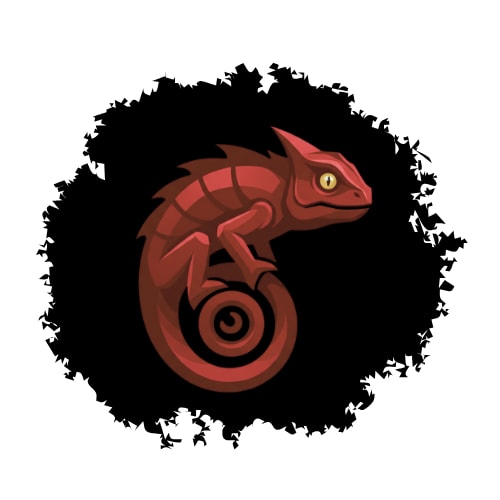
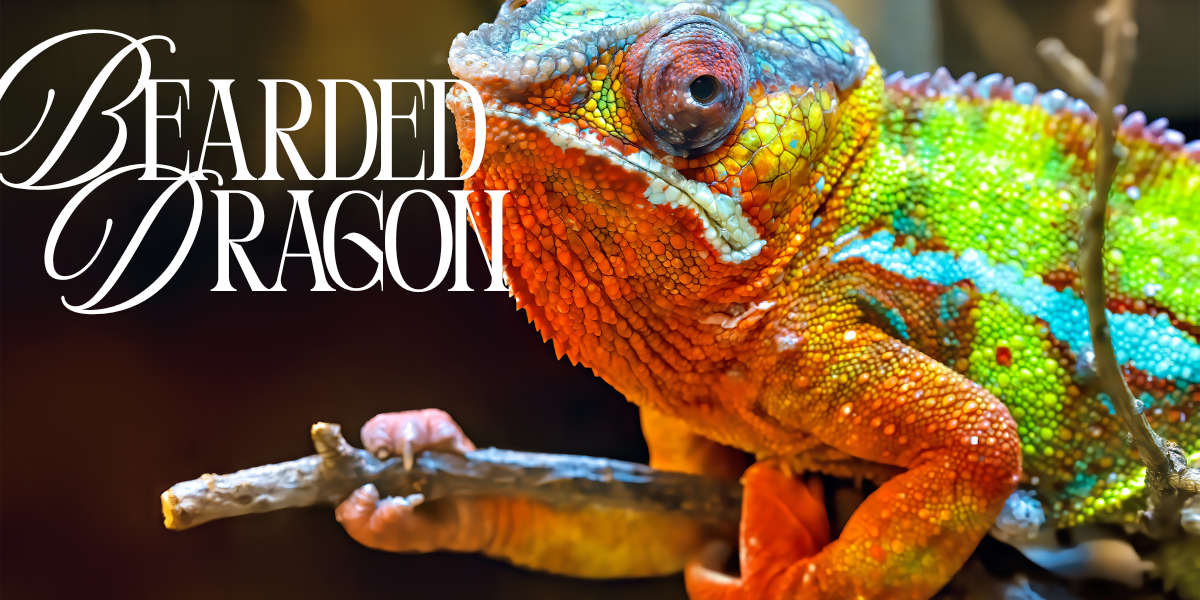
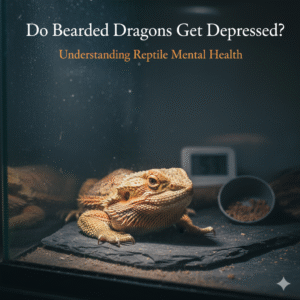
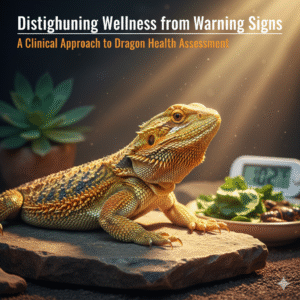
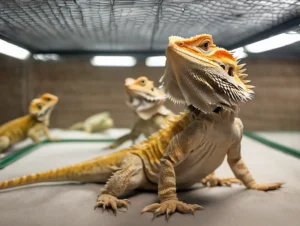
6 responses to “Bearded Dragon Health Issues”
[…] you own a bearded dragon, you might worry: how long can a bearded dragon go without eating? This is a common question […]
[…] to Get Your Bearded Dragon to […]
[…] factors contribute to a black tail bearded dragon, ranging from trauma to stress and infections. The causes of black tail often […]
[…] Juvenile bearded dragons represent the sweet spot for most owners old enough to be hardy but young enough to bond. Experienced breeders selling juveniles can provide detailed feeding records and demonstrate the animal’s feeding response. When clients ask about adult bearded dragons, I explain these established animals show their full personality and size, eliminating guesswork about temperament. Certified bearded dragon breeders often rehome adults due to breeding retirement or collection management rather than health problems. […]
[…] loss of appetite or refusal to eat vegetables, I investigate for digestive issues, impaction in bearded dragons, or environmental problems. Proper nutrition for bearded dragons requires variety—I’ve […]
[…] Do bearded dragons really get depressed?Yes, they can show depression-like symptoms such as lethargy, loss of […]